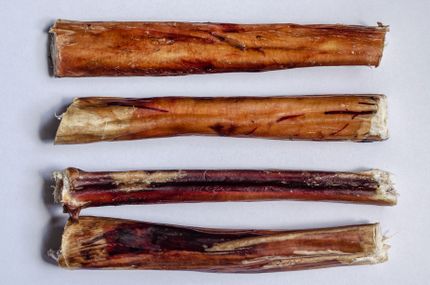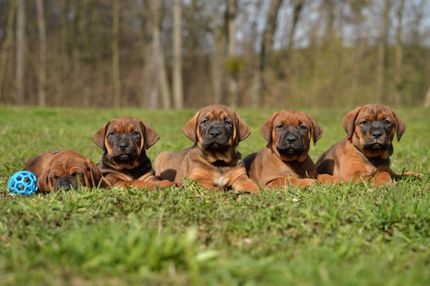
English Shepherd Breed description: Character & Co
English Shepherd
Facts & Origin
The "English Shepherd Dog" comes from the USA and is rather rare in our country.
The origin of the English Shepard
The roots of this excellent herding dog lie with the Collies. Settlers brought the forerunner of this dog from Europe. Later the Border Collie was crossed with it. Most likely, more types of herding and guard dogs played a role in the development of this type of dog.
The breed characteristics of the English Shepard
The English Shepard is a medium-sized and very agile herding dog. He was traditionally used for ranch work. Its specialty is driving cattle. For this he pinches the animals, like many other herding dogs, sometimes strongly in the hind legs.
Until today this dog is a very persevering working animal and only conditionally suitable as a family dog. The FCI has not recognized him yet. Only the United Kennel Club lists the English Shepard as an independent breed.
- Mixture of Collie, Border Collie and other herding dogs
- not recognized by the FCI
- Working dog



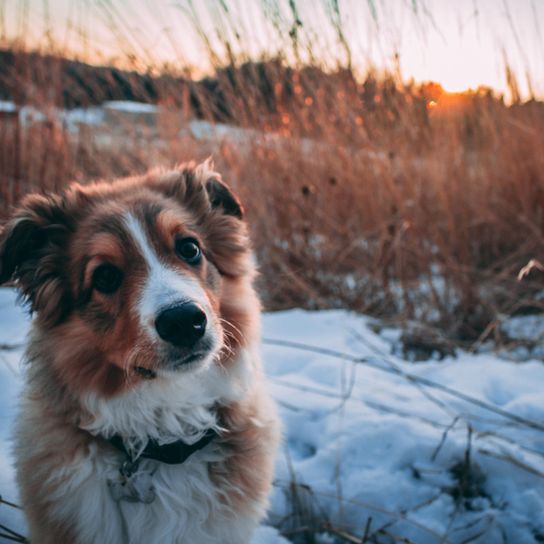
| Alternate Name | English Shepherd Dog, Farm Collie, Old English Sheepdog |
| Origin | UK |
| Life expectancy | 12 - 13 years |
| Care requirements | high-maintenance |
| Activity level | high |
| FCI group | not recognised |
| AKC group | not recognised |
| KC group | not recognised |
English Shepherd mixes
Attitude, character and temperament of the breed
The typical character traits of the English Shepard
It is a friendly, alert and very active dog. He is happy when he can pursue herding and driving. If you are athletic, ride horses, jog for hours, or like to go to agility, this dog might be for you.
Like all Collie types, it is friendly and strongly related to its human. A secondary function of English Shepards has always been to guard farmhouses. It can have a strong protective instinct that can turn into a vice if he doesn't do enough "work".
If you train it well and spend a lot of time with him, this dog will be a loyal and lively companion.
- active and needs "work
- only for very athletic people
- can have protective instinct
- otherwise sociable and well trainable
Character
Usage

Health and breeding information
Breed-typical diseases of the Shepherd from England
The hereditary disease "MDR1-defect", which is typical for Collies, also occurs occasionally in the English Shepard. This is a disorder in the glycoprotein metabolism. This is only dangerous if certain drugs are administered. In the worst case these can cause a life-threatening shock. There is a genetic test for the disease, which can be carried out before medication.
Breeding, acquisition and keeping of the English Shepard
Before you get a herding dog, you should think carefully whether you can cope with the working zeal of such an animal. For the city apartment and twice daily walk this dog is absolutely not suitable.
If it has nevertheless aroused your interest, you will have to look for something. The English Shepard is very rare in the German speaking countries.
The prices can be very different. As it is not an official breed in Germany, breeders are free to set their own prices.


Appearance and coat of the English Shepard
It looks like a typical mixture of Collie and Border Collie. In some breeding lines, one or the other heritage comes through more.
The coat is medium long to long, very soft and with a silky sheen in well groomed animals. Colors noted in the breed standard are black and white, black, tan mixes, tricolor, sable, or red and white.
Overall, this dog is an athletic appearance with a very straight topline. The legs are high, slender and muscular at the upper base. The long tail is well furnished with hair and hangs loosely down the body with a slight curve.
- resembles either the Collie or the Border Collie
- in many bright colours
- sporty appearance
- medium to long coat
Size, weight and life expectancy of the English Shepard
- shoulder height males 48 to 58 cm
- shoulder height bitches 45,7 to 56 cm
- Weight males 20 to 27 kg
- Weight bitches 18 to 22 kg
- Life expectancy 12 years and more
| Fur length | long |
| Fur | flat coated |
| Ear shape | Tilt-ear |
| Tail | fanned out |
| Anatomy | slim |
| Size ♀ | 44 - 55 cm |
| Weight ♀ | 18 - 23 kg |
| Size ♂ | 46 - 58 cm |
| Weight ♂ | 21 - 28 kg |
| Suitable For | - |
Colors
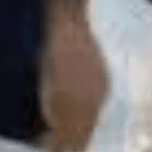

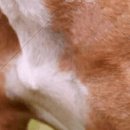


Known Diseases
MDR1 defect
The MDR1 defect is a defect in the MDR1 gene that can occur in some breeds of dogs and in humans. This results in the deficient or absent synthesis of a certain protein which is an important component of the blood-brain barrier, leading to hypersensitivity to some drugs.
Metabolic diseases (cystinuria)
Cystinuria is a hereditary metabolic disease. Affected dogs lack a transport protein for certain amino acids (protein building blocks). In the kidney, the task of this transport protein is a return transport of amino acids from the urine into the bloodstream.
Other medium dogs
Useful Articles
You can find articles that might interest you in the dogbible blog to match your favorite breed.
Visit our magazineto stay up to date on dog trends.
To find out more, view our Privacy Policy
Find here the breed that suits you and find out what character traits it has. Here you can also learn more about the origin, size and weight of your favorite breeds.
Matching your favorite breed, you'll find articles that might interest you on the dogbible dog blog.
Raw Barf Food for beginners - everything you need to know about feeding dogs naturally
5 tips to master dog encounters without problems and aggression























